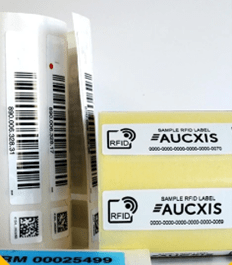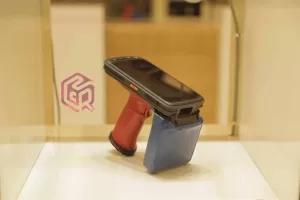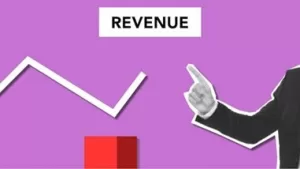Explore the maximum potential of your retail business with RFID! In this easy-to-follow guide, we'll take you through the essential steps to incorporate RFID technology seamlessly with your existing Retail infrastructure. From the basics to selecting the right RFID supplier, we've got you covered. It's time to simplify and elevate your retail game. Let’s get started!
Step 1: Understand RFID Basics
Learn RFID Components : First and foremost its important to familiarize yourself with the basic components of RFID systems to make optimum use of it. RFID comprises tags , which are small electronic devices attached to products, readers , which capture data from the tags, and a database or software that stores and analyzes the information. Unlike traditional barcodes, RFID does not require a direct line of sight.
Understand RFID Technology : Radio waves are used to communicate between the RFID tags and readers. Tags consist of a unique identifier and possibly additional data. The reader captures this information, allowing for real-time tracking and management of items using the software.

RFID Lables
Step 2 : Identify your Retail Challenges
Conduct a Needs Assessment : Its important to perform a thorough analysis of your retail operation. Identify challenges such as inaccuracies in inventory levels, frequent stockouts, or difficulties in billing during peak times , security ,etc. Understanding these pain points will guide your decision to implement RFID.
Evaluate RFID Suitability : Assess whether RFID technology can effectively address the challenges identified. RFID offers advantages such as real-time tracking, reduced manual errors , improved security , reduced wait time for customers and improved supply chain visibility. Ensure that the technology aligns with your specific business needs. Get in touch with a reputed RFID manufacturer to guide you through the right RFID solution for your specific concern.

RFID for Anti theft measures
Step 3 : Set Objectives and Budget
Define Objectives : Clearly articulate the objectives of incorporating RFID in your retail shop. Common Objectives could include improving inventory accuracy, reducing operational costs, quicken billing process ,improving anti theft measures , enhancing customer satisfaction by providing personalized experiences , or gaining a competitive edge. Discuss these Objectives clearly with your RFID supplier prior installation.
Establish Budget Parameters : Develop a detailed budget that encompasses all aspects of RFID implementation. Consider the costs of RFID tags, readers, software integration, training programs, and any potential infrastructure changes. This budget will serve as a roadmap for the implementation process.

Step 4 : Choose the right RFID Supplier
Take the time to research and evaluate RFID suppliers. Look for reputable companies with a proven track record in providing reliable RFID solutions. Consider factors such as product quality, customer support, and their experience in the retail industry.
Request References : Ask potential RFID suppliers for references from other retail clients. This allows you to gain insights into their performance and customer satisfaction levels.
Evaluate Technology Offerings : Assess the RFID technology offerings of potential suppliers. Ensure they provide a range of RFID tags and readers suitable for your specific retail needs.
Consider Scalability : Choose a supplier that can scale with your business. Whether you're a small boutique or a large department store, the RFID solution should be scalable to accommodate future goals .
Read this article to know how to choose the right RFID Supplier for your business
Step 5 : Choose RFID Tags and Readers
Select Suitable Tags : Choose RFID tags based on the characteristics of your merchandise. Consider factors such as size, material, and the environment in which the products will be stored or transported. Different types of tags such as LF, HF, UHF may be suitable for different types of items and applications . Discuss the pros and cons of each system with your supplier .
Read more to know on different RFID tags and their diverse applications
Align Readers with Requirements : Select RFID readers that complement your chosen tags and align with your business requirements. Consider the reading range, speed, and compatibility with existing technology infrastructure. The readers should be scalable to accommodate future expansion.

Step 6 : Plan Integration with Existing Systems
Develop Integration Strategy : Coordinate with your supplier to craft a comprehensive strategy for seamlessly integrating RFID with your existing systems, such as point-of-sale (POS) and inventory management software. See that the RFID systems causes minimum disruption to your existing infrastructure.
Collaborate with IT : Work closely with your IT team to ensure a smooth integration process. This collaboration is crucial for aligning RFID technology with other existing systems and softwares and minimizing disruptions to daily operations.

Step 7 : The Process
Attach RFID Tags to Each Item : RFID tags are affixed to every item or product in your store. These tags contain unique identifiers and pertinent data, facilitating rapid and accurate billing without manual scanning.
Connect Readers to RFID Software : Seamless connectivity between RFID readers and software should be ensured. This allows staff to effortlessly monitor inventory and bill multiple items in a short span of time.
RFID gates and Kiosks : Once you have tagged your items with RFID, you can explore various advanced solutions such as RFID security gates and self-service kiosks for your store. RFID gates ensure that no unbilled item moves out of the store. If an unbilled item passes through the gate, it will trigger alarms, alerting store personnel. Subsequently, RFID kiosks allow customers to bill their own items and make payments using various methods like Cash , UPI ,etc without depending on the staff .
Step 8 : Train Staff
Educate on RFID Technology : Choose a RFID company that provides training session on how to use their solution after installation. It ensures that staff can confidently operate RFID readers, troubleshoot common issues, and utilize the technology to enhance their efficiency. A well-trained team is essential for successful RFID implementation.

Step 9 : Conduct Pilot Programs
Implement in Controlled Areas : Begin the implementation with pilot programs in specific areas of your retail space. This allows you to test the RFID system in a controlled environment before a full-scale rollout.
Collect Feedback : Gather feedback from staff and closely monitor the performance of the RFID system during the pilot phase. Identify any challenges or areas for improvement and address them with your supplier before expanding implementation.

Step 10 : Scale Up Implementation
Expand Across the Store : If the pilot program is successful, gradually scale up the implementation of RFID across the entire retail shop. This could involve deploying RFID technology in additional departments like security ,supply chain or expanding its use in existing areas.
Monitor and Adjust : Continuously monitor the performance of the RFID system as it scales up. Address any issues promptly with your supplier and make adjustments to ensure the system's optimal functionality throughout the entire retail space.
Step 11 : Monitor and Optimize
Regular Performance Monitoring : Establish regular monitoring processes to evaluate the ongoing performance of the RFID system. This includes tracking key metrics such as inventory accuracy, improvement in security , Reduced queueing , Improved customer feedback ,supply chain visibility, and overall operational efficiency.
Continuous Improvement : Implement a continuous improvement mindset. Regularly assess the effectiveness of RFID technology, identify areas for optimization, and make necessary adjustments to maximize its benefits for your retail operation.

By following these steps, your retail shop can navigate the intricate process of incorporating RFID technology with a thorough understanding of the fundamentals and a strategic approach to implementation.
Checkout 2CQR’s latest RFID solutions for Retail stores and shops

